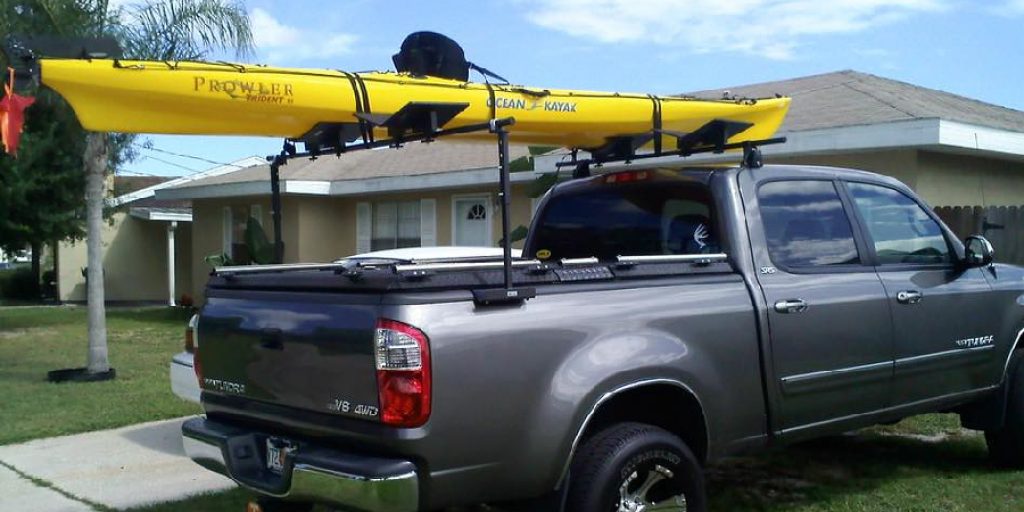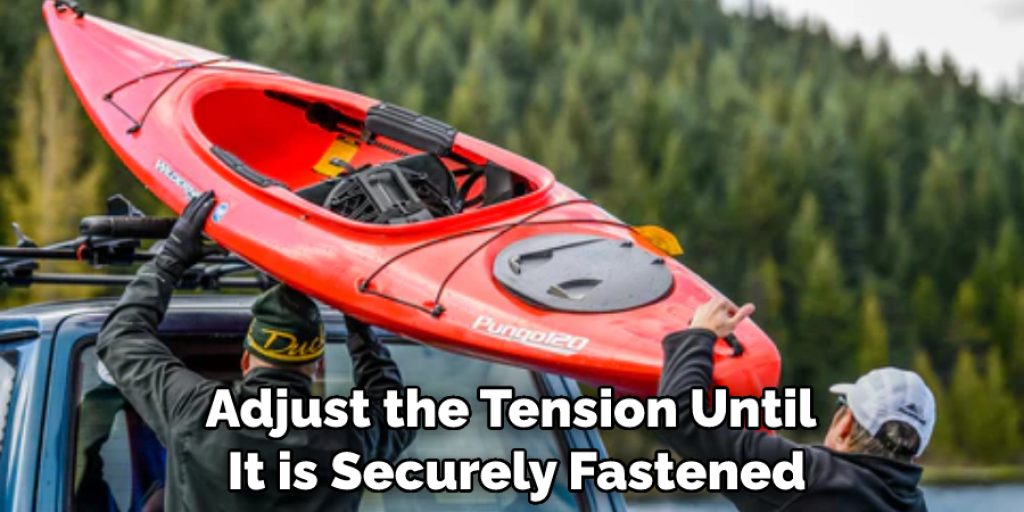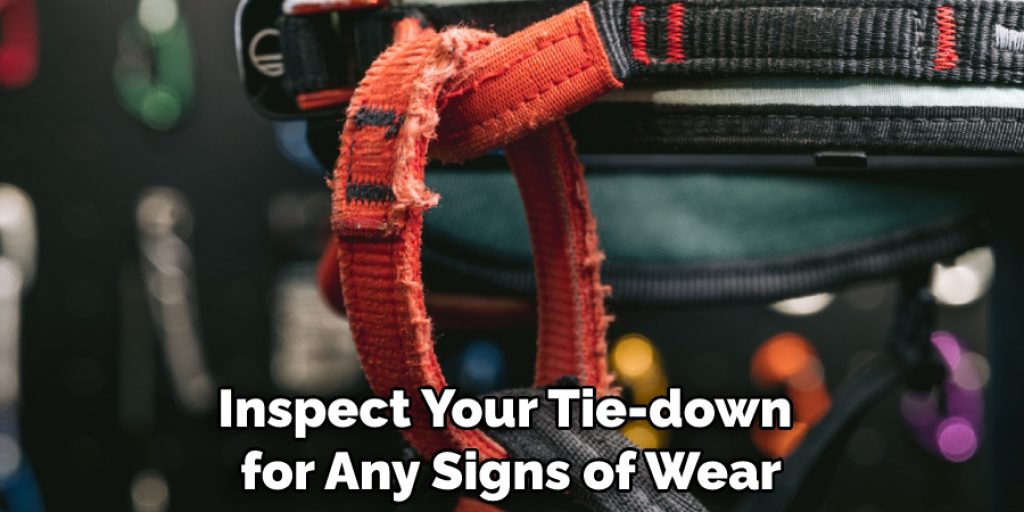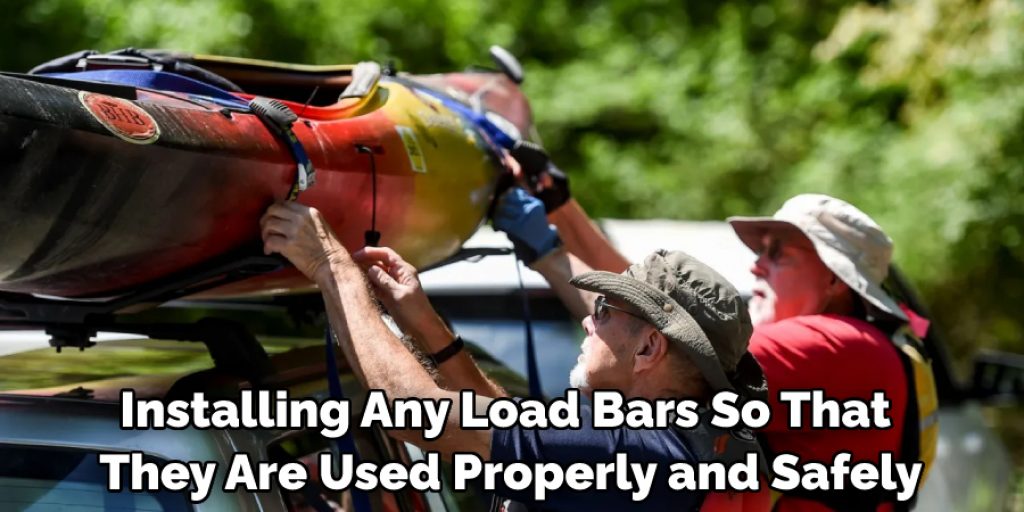How to Secure Kayak in Truck Bed
Is your next adventure taking you away on the open waters in a kayak? Are you worried about safely transporting and storing your kayak while traveling, or even during storage when not in use?

With all the mountains, rivers and vast ocean possibilities available for exploration, we understand wanting to be prepared with a strong knowledge of how to best secure your precious watercraft.
Have no fear! In this blog post, we’ll provide easy-to-follow instructions and helpful tips on how to secure kayak in truck bed. Whether it’s for long-distance travel or just around town – read on, fellow adventurer!
Do You Need a Bed Extender for a Kayak?
If you have an open truck bed, you may need a bed extender to help secure your kayak in the back of your vehicle. Bed extenders come in different shapes and sizes and can be used to both extend and secure the length of a truck bed. They are great for hauling large items, such as kayaks that may not fit securely within a standard truck bed size.
Bed extenders should be chosen based on the size of your kayak, how many kayaks you are carrying, and what type of truck you have. If you’re using a smaller truck, like a pickup or SUV, then you may want to consider using longer tie-downs or straps instead of relying solely on a bed extender. You should also consider factors such as the length of your kayak and the weight it can carry.
Once you have chosen a bed extender, make sure it is properly installed according to the manufacturer’s instructions. This will ensure that your kayak is secure and stable in your truck bed, preventing any type of damage during transport. Additionally, you may want to reinforce the bed extender with additional straps or tie-downs for extra support and stability.
By using a bed extender for your kayak transportation needs, you can rest assured that your kayak will be safe and secure when traveling in the back of your vehicle. With the right equipment and safety measures in place, you’ll be able to enjoy your kayaking adventures with peace of mind.

9 Methods on How to Secure Kayak in Truck Bed
1. Kayak Block
Kayak blocks are designed specifically for securing kayaks in the bed of a truck. They are typically made of foam and can be strapped down with bungee cords or ratchet straps. To properly secure a kayak in a truck bed, the blocks should be placed on either side of the kayak and then secured with straps or bungee cords through the eyelets. Although kayak blocks are the most secure option for securing a kayak, they do take up a lot of room in the truck bed.
2. Truck Bed Extender
A truck bed extender is a device that attaches to the back of a pickup truck and extends the length of the bed. This can be useful for securing longer kayaks, as it provides additional support.
Also, even for smaller kayaks, a truck bed extender can provide additional stability and help prevent the kayak from shifting during transport. Before installing the extender, make sure that it is securely fastened to the truck bed. To secure the kayak to the extender, use cross straps or ratchet straps.
3. Foam Blocks
Foam blocks can be used in lieu of kayak blocks and are often cheaper and easier to find. They can be secured in the same way as kayak blocks, with bungee cords or ratchet straps. Foam blocks will also provide extra cushioning to prevent damage to the kayak.
However, make sure that the foam is thick enough so it doesn’t compress too much and cause the kayak to shift or slide. With foam blocks, it is also important to check that the bungee cords or straps are tight and secure before you drive. If the kayak moves at all, it can cause damage to the kayak or even the truck.
4. Ratchet Straps
Ratchet straps are an affordable and effective way to keep your kayak secure while driving. They can also provide additional stability when using kayak blocks as they help to hold them in place. Start by wrapping one end of the strap around the built-in anchor points on your vehicle’s bed liner or frame.

Then wrap it around each side of the kayak and adjust the tension until it is securely fastened. Finally, connect the ratchet mechanism at both ends and tighten it as needed. You can also tie a knot at the end to further secure your kayak. Ratchet straps are great for short-distance trips and should be replaced regularly as they may wear out over time.
5. Bungee Cords
Bungee cords are another option for securing kayaks in trucks and are often cheaper than ratchet straps. They can be found at most hardware stores or online. When using bungee cords, it is important to make sure that the cord is securely attached to the kayak and that all knots are tight.
It is also important to make sure the cord is not too tight, as this could damage the kayak or cause it to become unstable. Once in place, the bungee cord should be checked periodically to make sure it remains secure. Make sure to use the appropriate size cords for your kayak and truck bed.
6. Rope
Rope can be used in lieu of bungee cords or ratchet straps and is often cheaper. It can be tied in various ways to secure kayaks, depending on the size and shape of the kayak. Using rope should be a last resort, as its effectiveness may not be as reliable compared to other methods.
To ensure maximum security, it is best to tie two opposite sides of the kayak securely with rope and secure the center with a bungee cord or ratchet straps. The rope can also be used in combination with other securing methods for added assurance. Be sure to double-check the knots and make sure they are tied securely before driving off.
7. Tie-Downs
Tie-downs are a type of rope that is specifically designed for securing loads in trucks. They can be found at most hardware stores or online. To use them, wrap them around the kayak and the truck bed several times. Make sure to double-check that all knots are tight before you begin driving. Secure the tie-downs with a ratchet or cam buckle for extra security.

Be sure to inspect your tie-down for any signs of wear or fraying before each use. When you are finished, be sure to store the tie-downs away from direct sunlight and extreme temperatures. This will help ensure they last longer.
8. Cam Straps
Cam straps are a type of strap that uses a cam mechanism to tighten, making them ideal for securing kayaks in trucks. They can be found at most hardware stores or online. Make sure to buy the right size for your kayak and truck bed. While using cam straps, make sure to secure them tightly but not so much that it damages the kayak.
Though cam straps are easy to use, they can also be difficult to remove if too much tension is applied. Try to avoid over-tightening the straps to make removal easier. Additionally, always inspect your cam straps for wear and tear before each use to ensure the best security for your kayak.
9. Load Bars
Load bars are devices that attach to the side rails of a pickup truck and provide additional support for securing loads in the bed of the truck. If you plan on carrying a kayak or other large items, load bars can be an invaluable tool for providing extra support.
With the right type of attachment points and materials, kayaks can be kept firmly in place when placed between two load bars. Be sure to read the instructions carefully before installing any load bars so that they are used properly and safely.
What Kind of Straps for Kayak?
When it comes to securing your kayak in the truck bed, there are several types of straps available. Ratchet straps and bow-tie straps are the two most common.
Ratchet straps feature a buckle that can be tightened by hand by ratcheting the strap until it is snug around the kayak. These types of straps provide the most secure grip, as they are designed to pull the entire kayak down tightly against the truck bed.
Bow-tie straps, also known as cam straps, have a buckle that is secured with a simple pull of the strap, making them fast and easy to use. These types of straps can be used to tie down smaller boats or items easily and securely but may not be ideal for heavier gear like sit-on-top kayaks.

Conclusion
With these helpful tips, securing your kayak in a truck bed doesn’t have to be an intimidating task; doing so will help ensure that you can worry less while driving and more while being out on the open waters with your kayak.
Don’t take risks when learning how to secure kayak in truck bed – knowledge is power and it always pays off in the long run!




